| Lesson 9 | Workflow services |
| Objective | Describe the function of workflow services. |
Describe Function of Workflow Services
Workflow Services is a technology that is used to automate and manage business processes. Workflow Services provides a framework for creating, deploying, and managing workflows, which are a series of steps or tasks that must be performed to accomplish a specific business goal.
The function of Workflow Services can be described as follows:
In summary, Workflow Services provides a framework for automating and managing business processes, enabling collaboration, supporting integration, and improving efficiency. By defining and automating business processes, Workflow Services can help organizations to streamline operations and improve overall productivity.
What is workflow? Workflow simulates the flow of information and control in a business process using software. Whereas most middleware is at the core of technology and data integration, workflow is at the core of process integration. Workflow management can be described as the efficient management of the flow of information and control in a company's business processes. By managing these processes more efficiently, companies can reduce their costs and improve their product and customer service, giving them an important competitive edge.
The function of Workflow Services can be described as follows:
- Automating Business Processes: Workflow Services enables the automation of business processes by defining the steps that need to be executed to complete a business process. This can include steps such as approvals, notifications, and data entry.
- Managing Workflows: Workflow Services provides a centralized management console that allows administrators to view and manage workflows in real-time. This includes monitoring the progress of workflows, managing exceptions, and reassigning tasks as needed.
- Enabling Collaboration: Workflow Services enables collaboration between different departments and teams by providing a common platform for managing business processes. This can help to improve communication, reduce errors, and streamline workflows.
- Supporting Integration: Workflow Services supports integration with other systems and applications, allowing workflows to be triggered by events in other systems or to trigger events in other systems. This helps to create an interconnected system that can automate business processes across different departments and systems.
- Improving Efficiency: Workflow Services can help to improve efficiency by automating repetitive tasks, reducing manual data entry, and eliminating errors. This can help to free up time for employees to focus on more complex tasks and improve overall productivity.
In summary, Workflow Services provides a framework for automating and managing business processes, enabling collaboration, supporting integration, and improving efficiency. By defining and automating business processes, Workflow Services can help organizations to streamline operations and improve overall productivity.
What is workflow? Workflow simulates the flow of information and control in a business process using software. Whereas most middleware is at the core of technology and data integration, workflow is at the core of process integration. Workflow management can be described as the efficient management of the flow of information and control in a company's business processes. By managing these processes more efficiently, companies can reduce their costs and improve their product and customer service, giving them an important competitive edge.
Question: What is the chief reason to adopt workflow services products?
Answer: To manage discrete work processes more efficiently, thereby reducing costs and improving product and customer service.
Workflow technologies
Workflow products usually consist of the following major functions:
- Workflow or process definition tools
- Servers/engines
- Client applications
- Monitoring / administration tools
- The Slide Show below clarifies the role of each of these technologies:
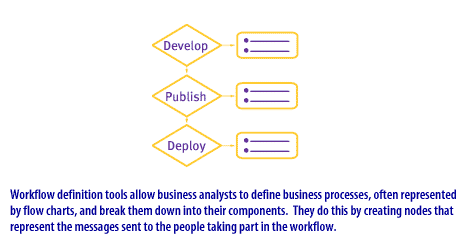
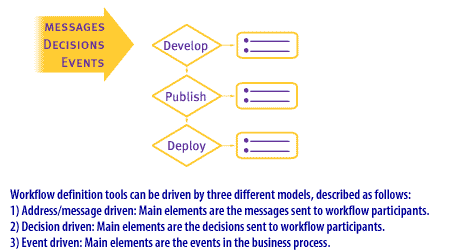
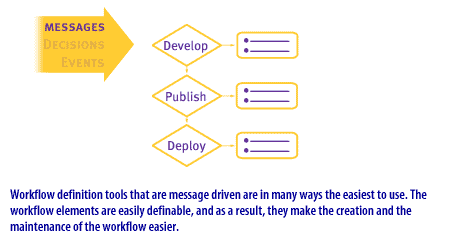
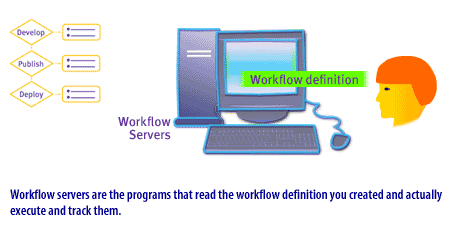
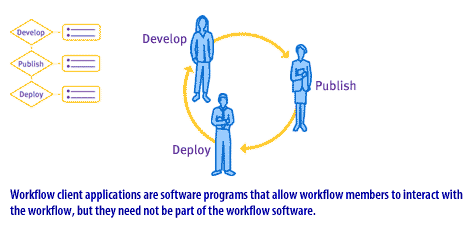
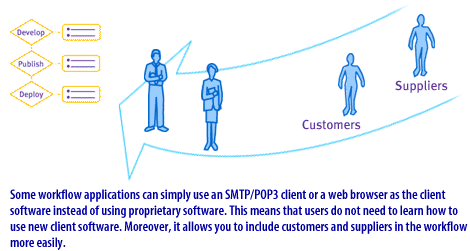
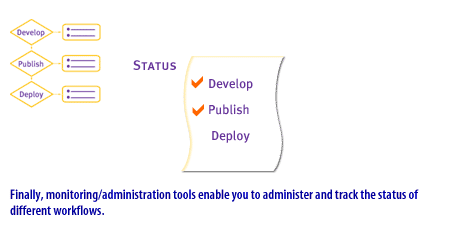
Because there is such a wide range of workflow services tools, they are a good option for helping to define and automate your work processes.
Workflow Services Consideration
The application of workflow has largely been niche oriented. In eBusiness, however, particularly in complex B2B interchanges that involve not only
several people inside your company, but also multiple people in external partner companies, workflow becomes a necessity. In many cases, EAI
vendors have added workflow features to their product suites. Since EAI is needed to integrate data and processes across multiple applications and
computing assets within eBusiness, there is a real need for workflow services between the various points of integration.
Workflow Services - Exercise
Click the Exercise link below to match workflow service categories to the needs that they meet.
Workflow Services - Exercise
Workflow Services - Exercise